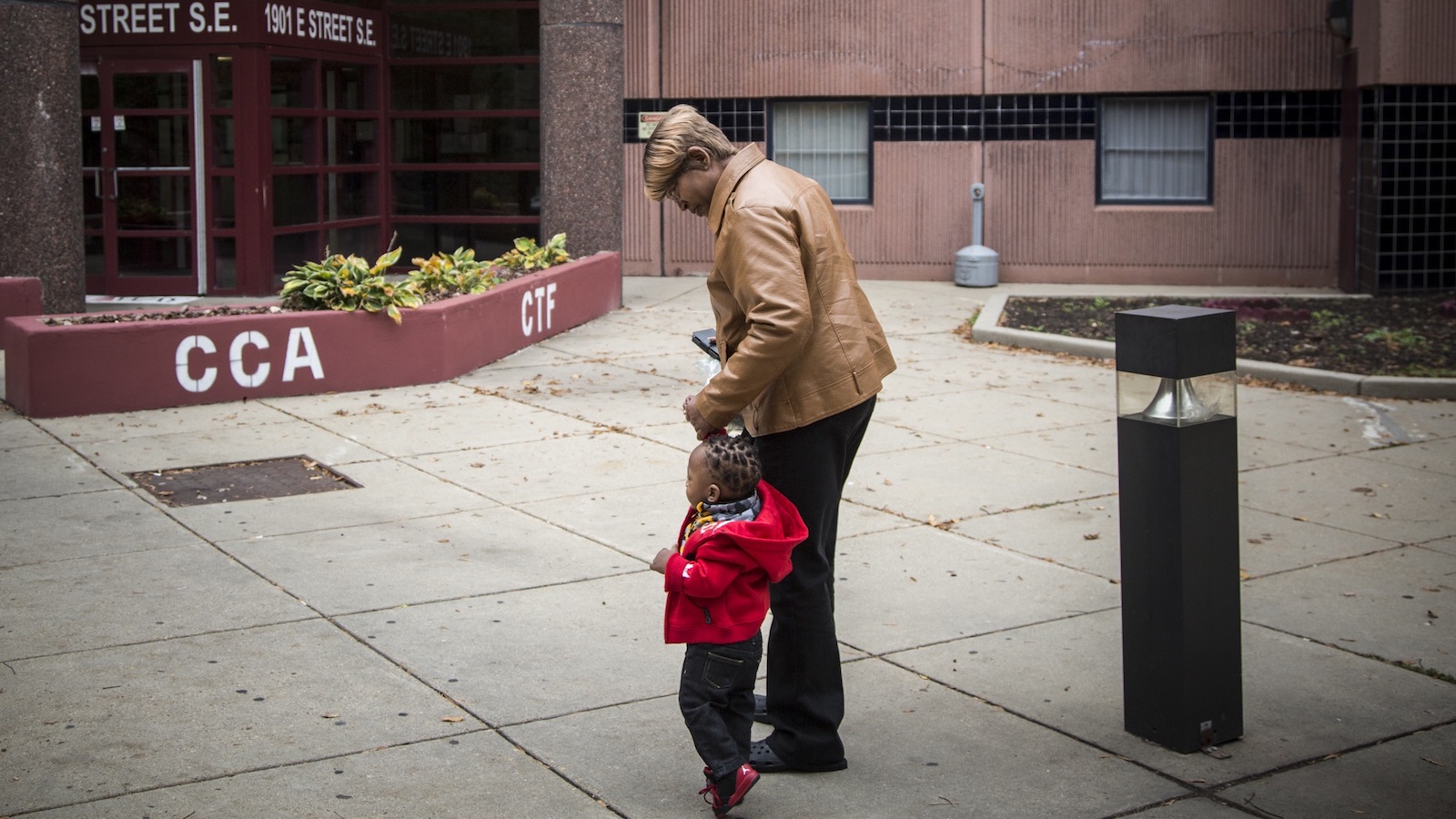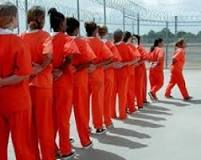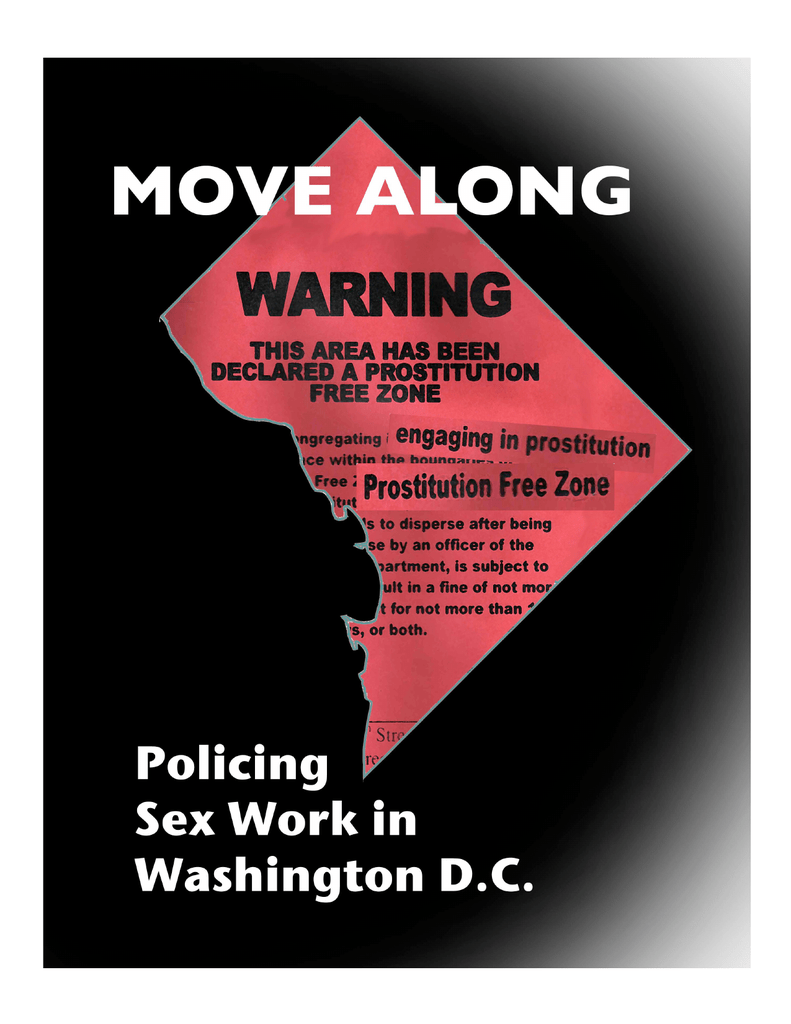
Tonya Kamara and her grandson Antonio walk to the entrance of DC’s Correctional Treatment Facility to visit April, Tonya’s daughter and Antonio’s mother.
The United States has the largest prison system in the world. With a constantly shifting population, in state and federal facilities, our communities suffer from the hardships of physical distance, loss of capital and an overall detrimental impact on our most vulnerable communities. Take Washington, DC, as an example. Since the Revitalization Act of 1997, the Federal Bureau of Prisons houses District of Columbia sentenced felons, a DC prison no longer exists. This “revitalization” legislation means persons convicted of a felony in DC can be housed at federal prisons anywhere within the United States, regardless of physical proximity or personal circumstances.
For women prisoners, the lack of regard for how far those convicted of a felony in DC are housed becomes a salient issue. The incarceration rate of women, specifically women of color, is constantly on the rise throughout the country. Washington, DC, has a Correctional Treatment Facility where women are placed before sentencing. Then they are turned over to the Federal Bureau of Prisons for placement. Information concerning the placement of women who are convicted of a felony in DC is vague and ambiguous. The lack of clarity shows how this issue is neither discussed nor on the forefront of our minds, as it should be. Why are we not questioning the whereabouts of women who are incarcerated in the Nation’s Capital? Are we not more concerned because the population that this issue affects is a population that constantly faces factors of oppression, a population that this country treats as if they hold no value? The needs of female prisoners have been constantly overlooked and handled inefficiently due to a male dominated environment where they are disadvantaged because they are the minority in numbers. Women prisoners’ needs not being met results from stereotypes of female criminality, which place women outside the norm of gendered behavior. As a society, then, we care less because female offending doesn’t fit within the norm of a how women are supposed to behave.
When convicted in Washington, DC, women are housed by the Bureau of Prisons and can be placed a long way from their families. By placing women thousands of miles away from their families, the assumption is made that men and women share the same experiences. For example, women have children and many women who are incarcerated have had the experience of motherhood. According to the idea of gendered normed behavior, women are the caretakers to their children. Therefore, the long distances punish women offenders twice over, once for the crime and then for having stepped outside the norm of dutiful mother. Sending women far away completely discounts any significance to their being mothers. While men also shouldn’t be subjected to this treatment, if we analyze how society thinks in terms of a mother and child relationship, disregarding and dismantling this relationship is shameful.
At the same time, communities incur a loss of capital due to the increase of prisons. Ruth Wilson Gilmore has traced the relationship between land development and the prison binge. In California and other places, prisons were initially located in urban areas. Then, they shifted been to rural areas where the land value was initially low. This shift brings to surface numerous problems including the financial value the area holds and the shift of political power. Inmates are often counted within the census in the area they are located in so that the area the prison is moved to has an increase in population, especially if the area was initially rural. Urban areas already face forms of oppression in terms of political representation and are considered to posses no social capital. Shifting prisons from urban to rural areas is an extension of that claim.
The prison system seems to be a way to further silence urban minority communities. Whether it’s destroying a mother and child relationship or stripping the power from an entire community, the United States prison system is growing at the expense of those who are vulnerable. When will these silenced populations be given a voice? When will those communities be repaid for the theft of their value, and when will Black and Latina women of Washington, DC, be reinstated and repaid for the losses they have been forced to endure?
(Photo Credit: Vera Institute / Gabriela Bulisova)




 As someone who lives in deepest Southeast DC (Alabama Avenue and Stanton Road), I’m living in an area where the global collapse of capitalism has stalled gentrification. Of course, in my predominantly African American neighborhood, it wasn’t called that. My new neighbors are participating in “revitalization,” which has meant the
As someone who lives in deepest Southeast DC (Alabama Avenue and Stanton Road), I’m living in an area where the global collapse of capitalism has stalled gentrification. Of course, in my predominantly African American neighborhood, it wasn’t called that. My new neighbors are participating in “revitalization,” which has meant the 